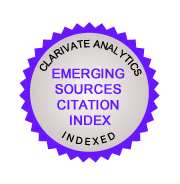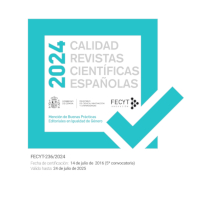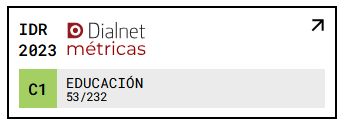Lecturas ecocríticas del patrimonio
ecologías animadas y sus raíces ancestrales: ecoficciones legendarias y literarias
DOI:
https://doi.org/10.18172/con.5634Palabras clave:
ecologías animadas, numen aquae, ecoficciones, imaginarios del aguaResumen
Hoy está fuera de discusión la importancia del patrimonio y la memoria biocultural y, en concreto, de las sabidurías tradicionales y locales que se expresan de forma particular en las leyendas y otras ecoficciones (Dwyer, 2010; Martos Núñez, 2013), tanto de corpus de textos folklóricos como de textos literarios o multimodales. Los paradigmas de estudio en que se apoyan dichos estudios son varios, desde la etnoecología a la ecocrítica y otras corrientes críticas, y, por ello, el artículo pretende visibilizar las sabidurías ancestrales en el ámbito de los imaginarios del agua, y desde una perspectiva comparatista en relación a los distintos discursos aludidos. En particular, tratamos de explicar las ecologías animadas a través de los númenes aquae o personificaciones / deidades del agua, que son el eje de tales ecoficciones, buscando patrones y correlaciones más allá del contexto local. Relacionamos esta humanización del agua con los usos y claves simbólicas de la cultura del agua en su diversidad, como es su vinculación con el concepto de habitar poético y con las ecologías animadas.
Descargas
Citas
Abram, D. (2012). The spell of the sensuous: Perception and language in a more-than-human world. New York: Vintage.
Barlow, M. (2008). El agua, nuestro bien común: hacia una nueva narrativa del agua. México DF: The Council of Canadians, Fundación Heinrich Böll.
Barriga Galeano, E., Martos Núñez, E. y Palmer, I. (2019). La tradición y sus metamorfosis fílmicas: El manantial de la doncella, de Ingmar Bergman. Imaginarios de la naturaleza y de la cultura del agua: Paradigmas científicos y planteamientos didácticos. Madrid: Marcial Pons, 113-121.
Bravo Gaviro, A. (2019). Mitologías de la naturaleza en El Señor de los Anillos y su proyección didáctica”. Tejuelo. Didáctica de la lengua y la literatura. Educación, 29, 161-186.
Bueno, G. (1996). Sobre la realidad de los númenes animales en la religiosidad primaria, El Basilisco, 20, 87-88.
Campos Fernández-Fígares, M. y García Rivera, G. (2017). Aproximación a la ecocrítica y la ecoliteratura: literatura juvenil clásica e imaginarios del agua”. Ocnos, 16(2), 95-106. https://doi.org/10.18239/ocnos_2017.16.2.1511 DOI: https://doi.org/10.18239/ocnos_2017.16.2.1511
Cantero Martín, P. A. (1992). Las tramas del agua. El agua como metáfora viva, González Alcantud, J. A. y Malpica Cuello, A. (Coords.), El agua. Mitos, ritos y realidades, Barcelona, Anthropos, 166-189.
Castoriadis, C. (1997). El imaginario social instituyente. Zona erógena, 35, 1-9.
Çay, M. (2021). Tainted Away: Violence Over Nature in the Anime of Hayao Miyazaki. Handbook of Research on Aestheticization of Violence, Horror, and Power. IGI Global, 259-279. DOI: https://doi.org/10.4018/978-1-7998-4655-0.ch014
Clendenon, C. (2009). Karst hydrology in ancient myths from Arcadia and Argolis, Greece, Acta Carsologica, 38(1), 144-154. https://doi.org/10.3986/ac.v38i1.143 DOI: https://doi.org/10.3986/ac.v38i1.143
Crate, S. (2011). A political ecology of “water in mind”: attributing perceptions in the era of global climate change. Weather, Climate, and Society, 3(3), 148-164. https://doi.org/10.1175/WCAS-D-10-05006.1 DOI: https://doi.org/10.1175/WCAS-D-10-05006.1
Cutchin, J. (2016). Un banquete troyano: extraterrestres, seres elementales y bigfoots. Diversa Ediciones.
Dinzelbacher, P. et al. (2006). Frau Holle, Frau Percht und verwandte Gestalten, 160 Jahre nach Jacob Grimm aus germanistischer Sicht betrachtet. Stuttgart: Hirzel.
Dwyer, J. (2010). Where the wild books are: A field guide to ecofiction. University of Nevada Press.
Ferry, L. (1995). The new ecological order. University of Chicago Press.
Frost, M. y Lynch, D. (1990). Twin Peaks, film, USA, Lynch/Frost Productions.
Gimbutas, M. (1989). The language of the goddess: Unearthing the hidden symbols of western civilization. San Francisco: Harper & Row.
Glotfelty, Ch. y Fromm, H. (Eds.). (1996). The ecocriticism reader: landmarks in literary ecology. University of Georgia Press.
Gunkel, H. (1901). Génesis. Gotinga: Vandenhoeck & Ruprecht.
Harmanşah, Ö. (2018). Geologies of Belonging: The Political Ecology of Water in Central Anatolia. Water and Power in Past Societies, Albany NYP, 259-276.
Harmansah, Ö. (2015). Place, memory and healing. Londres: Taylor & Francis.
Illich, I. (1986). Ideas in progress H2O and the waters of forgetfulness. Londres: Marion Boyars P.
Keetley, D. y Sivils, M. W. (2017). Introduction: Approaches to the ecogothic. Ecogothic in nineteenth-century American literature. Oxfordshire: Routledge, 1-20. DOI: https://doi.org/10.4324/9781315464930-1
Kozel, S. (2012). Geopoética das paisagens: olhar, sentir e ouvir a “natureza. Caderno de Geografia, 22(37), 65-78.
Lakoff, G. y Johnson, M. (1991). Metáforas de la vida cotidiana. Madrid: Cátedra.
Lecouteux, C. (1999). Hadas, brujas, y hombres lobo en la Edad Media. Madrid: Olañeta.
Leff, E. (2003). La ecología política en América Latina. Un campo en construcción. Polis. Revista Latinoamericana, 1(5). https://www.redalyc.org/articulo.oa?id=30500505 DOI: https://doi.org/10.1590/S0102-69922003000100003
Linton, J. (2010). What is water? The history of a modern abstraction. UBC Press. DOI: https://doi.org/10.59962/9780774817035
Martínez Dueñas, W. (2012). Quand H2 O et esprit de l’eau se rencontrent: Coexistence de plusieurs mondes à Puracé, Colombie. Recherches amérindiennes au Québec, (42)2-3, 39-47. https://doi.org/10.7202/1024101ar DOI: https://doi.org/10.7202/1024101ar
Martos, A. y Martos, A. E. (2018). Imaginarios y leyendas marianas iberoamericanas y su matriz circumatlántica: el caso de Stella Maris y la Virgen del Carmen. Acta Scientiarum. Language and Culture, (40)2. DOI: https://doi.org/10.4025/actascilangcult.v40i2.35825
Martos García, A. (2016). Las sirenas como arquetipos transculturales y como recurso para la educación literaria. Didáctica: Lengua y Literatura, 28, 181-199. DOI: https://doi.org/10.5209/DIDA.54081
Martos García, A. (2018). El giro ontológico en las lecturas de la Naturaleza: propuestas de intervención didáctica. Álabe. Revista De Investigación Sobre Lectura Y Escritura, 17. http://doi.org/10.15645/Alabe2018.17.1 DOI: https://doi.org/10.15645/Alabe2018.17.1
Martos García, A. (2021). Lecturas ecológicas: hacia un canon de ecolecturas. Educatio Siglo XXI, 39(1), 191-210. https://doi.org/10.6018/educatio.469231 DOI: https://doi.org/10.6018/educatio.469231
Martos García, A. y Martos García, A. E. (2015). Nuevas lecturas de la llorona: imaginarios, identidad y discurso parabólico. Universum (Talca), (30)2, 179-195. DOI: https://doi.org/10.4067/S0718-23762015000200011
Martos-García, A., Martos-Núñez, E. y del Pino-Tortonda, A. (2019). Cultura del agua, multinaturalismo y prosopografia. Agua y Territorio/Water and Landscape, 13, 93-102. DOI: https://doi.org/10.17561/at.13.4078
Martos Núñez, E. (2019). La dama en el árbol: Hermenéutica y ecofeminismo. Imaginarios de la naturaleza y de la cultura del agua: Paradigmas científicos y planteamientos didácticos. Madrid: Marcial Pons, p. 55.
Martos Núñez, E. y Martos García, A. (2013). Ecoficciones e imaginarios del agua y su importancia para la memoria cultural y la sostenibilidad. Alpha (Osorno), 36, 71-91. DOI: https://doi.org/10.4067/S0718-22012013000100006
Menéndez Maldonado, C. (2016). Santa Mariña de Aguas Santas: una leyenda cristiana de la Edad de Hierro. Clío: Revista de historia, 181, 50-59.
Mlekuž, D. (2019). Animate Caves and Folded Landscape. Büster, Linsey Warmenbol, Eugene y Mlekuž, Dimitrij (Eds.). Between Worlds. Understanding Ritual Cave Use in Later Prehistory. Basel (Switzerland): Springer Internation. DOI: https://doi.org/10.1007/978-3-319-99022-4_4
Norberg-Schulz, Ch. ([1995] 2020). Genius Loci. El espíritu del lugar. Revista Morar, Facultad de Arquitectura, Universidad Nacional de Colombia, sede Medellín, 1, 15-20.
Ortuzar Escudero, M. J. (2020). Las metáforas sensoriales y el conocimiento de Dios en algunos textos de san Agustín. Revista chilena de estudios medievales, 18, 29-38. http://doi.org/10.4067/S0719-689X2020000200029 DOI: https://doi.org/10.4067/S0719-689X2020000200029
Pacho, C. Rubio. (2007). El sol de la tradición: los primeros trabajos de Menéndez Pidal sobre el romancero. Anuario de Letras. Lingüística y Filología, 45, 259-266.
Parker, E. (2021). The Forest and the Ecogothic: The Deep Dark Woods in the Popular Imagination. Basingstoke: Palgrave and Macmillan. DOI: https://doi.org/10.1007/978-3-030-35154-0
Piccardi, L. y Masse, W. B. (Eds.). (2007). Mith and geology. Londres: Geological Society.
Puleo, A. (2014). Ecofeminismo para otro mundo posible. Madrid: Ediciones Cátedra.
Toledo, V. y Barrera-Bassols, N. (2008). La Memoria Biocultural: La importancia ecológica de las sabidurías tradicionales. Barcelona: Icaria.
Tylor, E. B. ([1871] 1958). Primitive culture. New York: Harper & Row.
Vecchi, R (2019). Genius loci e a imprescritibilidade do mito: arquiteturas simbólicas em tramas urbanas pós-coloniais (Luanda e Maputo). Memória, Cidade e Literatura: De São Paulo de Assunção de Loanda a Luuanda, de Lourenço Marques a Maputo, 201-211.
Vitaliano, D. B. (1968). Geomythology: the impact of geologic events on history and legend with special reference to Atlantis. Journal of the Folklore Institute, 5(1), 5-30. DOI: https://doi.org/10.2307/3813842
Vitaliano, D. B. (1973). Legends of the Earth: their geologic origins. Bloomington: Indiana University Press.
Viveiros de Castro, E. (2004). Perspectivismo y Multinaturalismo en la América Indígena. Surrallés, A. y García, P. (Eds.). Tierra Adentro: Territorio indígena y percepción del entorno. Copenhague: IWGIA, 37-80.
White, K. (1988). Kenneth White. Villa Alegre: Deriva.
Descargas
Publicado
Cómo citar
Número
Sección
Licencia
Derechos de autor 2023 Alberto Eloy Martos García, Gabriel Núñez Molina

Esta obra está bajo una licencia internacional Creative Commons Atribución 4.0.
El autor o autora conserva todos los derechos sobre su artículo y cede a la revista el derecho de la primera publicación, no siendo necesaria la autorización de la revista para su difusión una vez publicado. Una vez publicada la versión del editor el autor está obligado a hacer referencia a ella en las versiones archivadas en los repositorios personales o institucionales.
El artículo se publicará con una licencia Creative Commons de Atribución, que permite a terceros utilizar lo publicado siempre que se mencione la autoría del trabajo y la primera publicación en esta revista.
Se recomienda a los autores/as el archivo de la versión de editor en repositorios institucionales.













